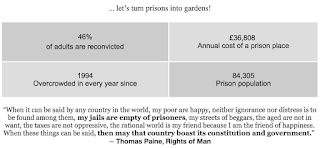Asset Manager - big box, little box
This Asset Manager project took a simplistic view of data and treats it like boxes - things live inside things and have relationships. So to grasp this concept we start with a company, the company has rooms, in these rooms are people and equipment. Inside the equipment you have software and hardware. Inside the people you have skills and knowledge.
I had a look at the files for this project and they date back to July 2005! Wow, has it been that long since I looked at this project? Er, you can probably tell from the clunky interface.
The first view is that of the company with some details about it ...

Then we start clicking on items and can look at who is in the studio, this shows the people and any machines that are positioned near them ...

Now we've clicked on an employee, which happens to be me, and we see that they are responsible for some keys to the building and that they also have some information associated with them which is "ASP" and "HTML" skills ...

So with this simplistic view any data can be linked to anything, not just assets. Why stop there when you can link people, skills, products, licenses, rooms, collectables.
The interface also lets you control the information displayed against items such as name; address and telephone details for people. Or what about serial numbers and license keys against software. This is also edited and changed via the same interface.
There was also the concept of exporting the information into a spreadsheet which could be edited and uploaded back into the system for keeping quick records of items and being able to edit them outside of the system. (Not fully implemented)
This view of information and data can be applied to may different types of problem.
Storing assets in a company // Keep a track of items in a house for insurance // Track items in boxes in a garage // Track software installed on machines // Information on what is in boxes in the attic and where they are positioned
It would be great if the product offered and online version which could be viewed by company and an offline version that could be edited and backed up when required.
The project files consist of:
I had a look at the files for this project and they date back to July 2005! Wow, has it been that long since I looked at this project? Er, you can probably tell from the clunky interface.
The first view is that of the company with some details about it ...

Then we start clicking on items and can look at who is in the studio, this shows the people and any machines that are positioned near them ...

Now we've clicked on an employee, which happens to be me, and we see that they are responsible for some keys to the building and that they also have some information associated with them which is "ASP" and "HTML" skills ...

So with this simplistic view any data can be linked to anything, not just assets. Why stop there when you can link people, skills, products, licenses, rooms, collectables.
The interface also lets you control the information displayed against items such as name; address and telephone details for people. Or what about serial numbers and license keys against software. This is also edited and changed via the same interface.
There was also the concept of exporting the information into a spreadsheet which could be edited and uploaded back into the system for keeping quick records of items and being able to edit them outside of the system. (Not fully implemented)
This view of information and data can be applied to may different types of problem.
Storing assets in a company // Keep a track of items in a house for insurance // Track items in boxes in a garage // Track software installed on machines // Information on what is in boxes in the attic and where they are positioned
It would be great if the product offered and online version which could be viewed by company and an offline version that could be edited and backed up when required.
The project files consist of:
- Flash source files
- Visual Basic source files
- Export the data stored (see notes)
- Desktop executable version
- Starter set of images and XML


Comments
Post a Comment